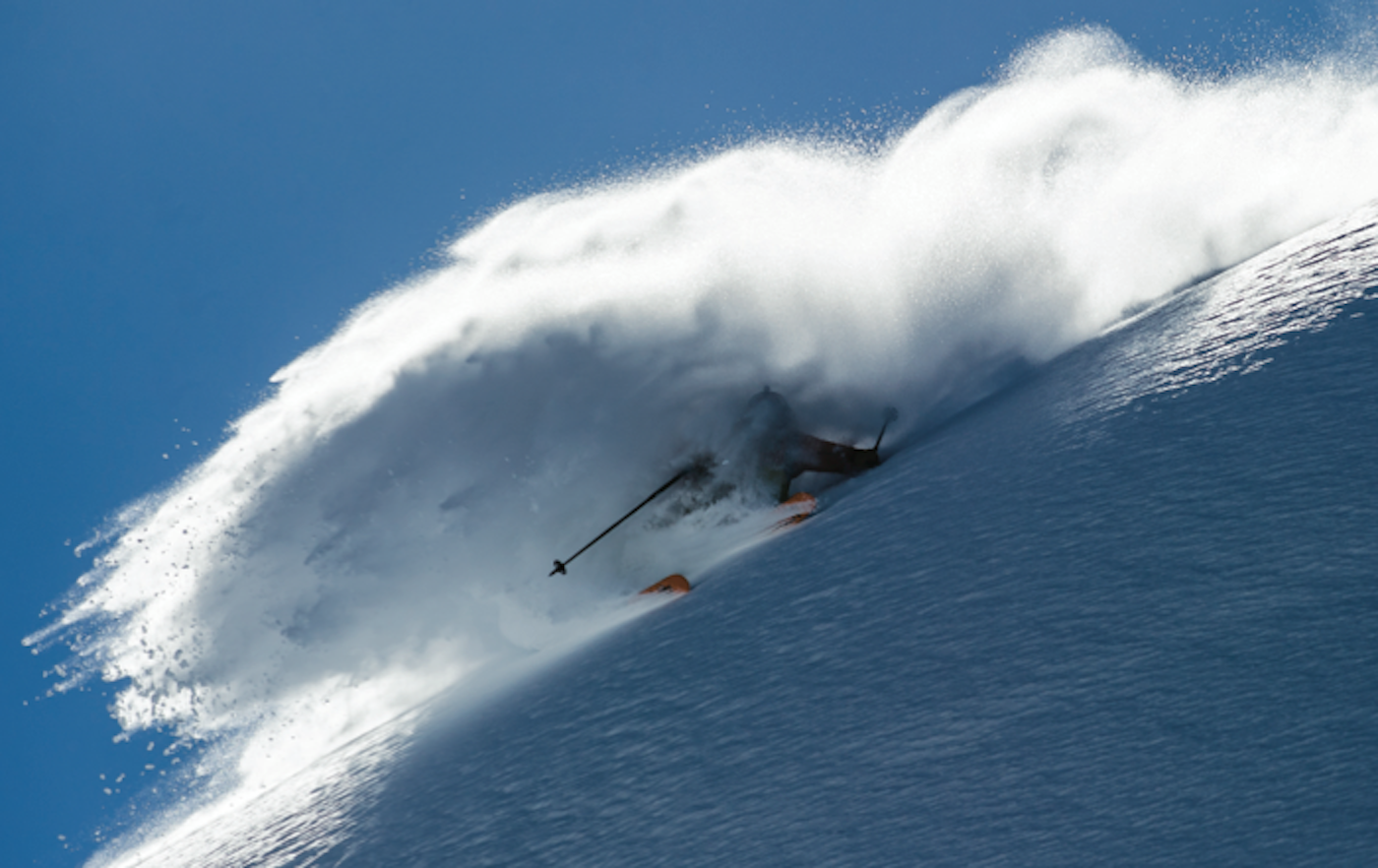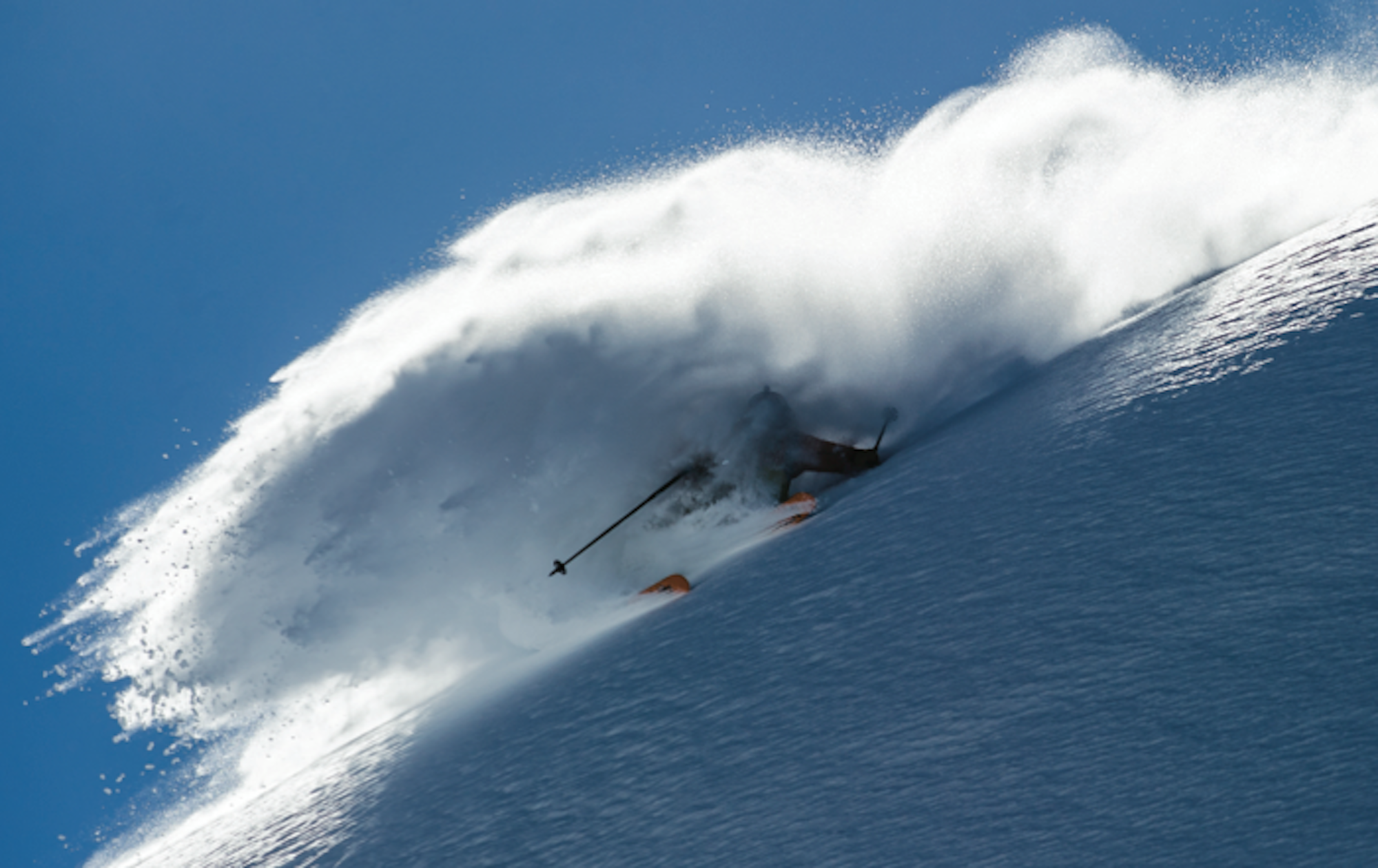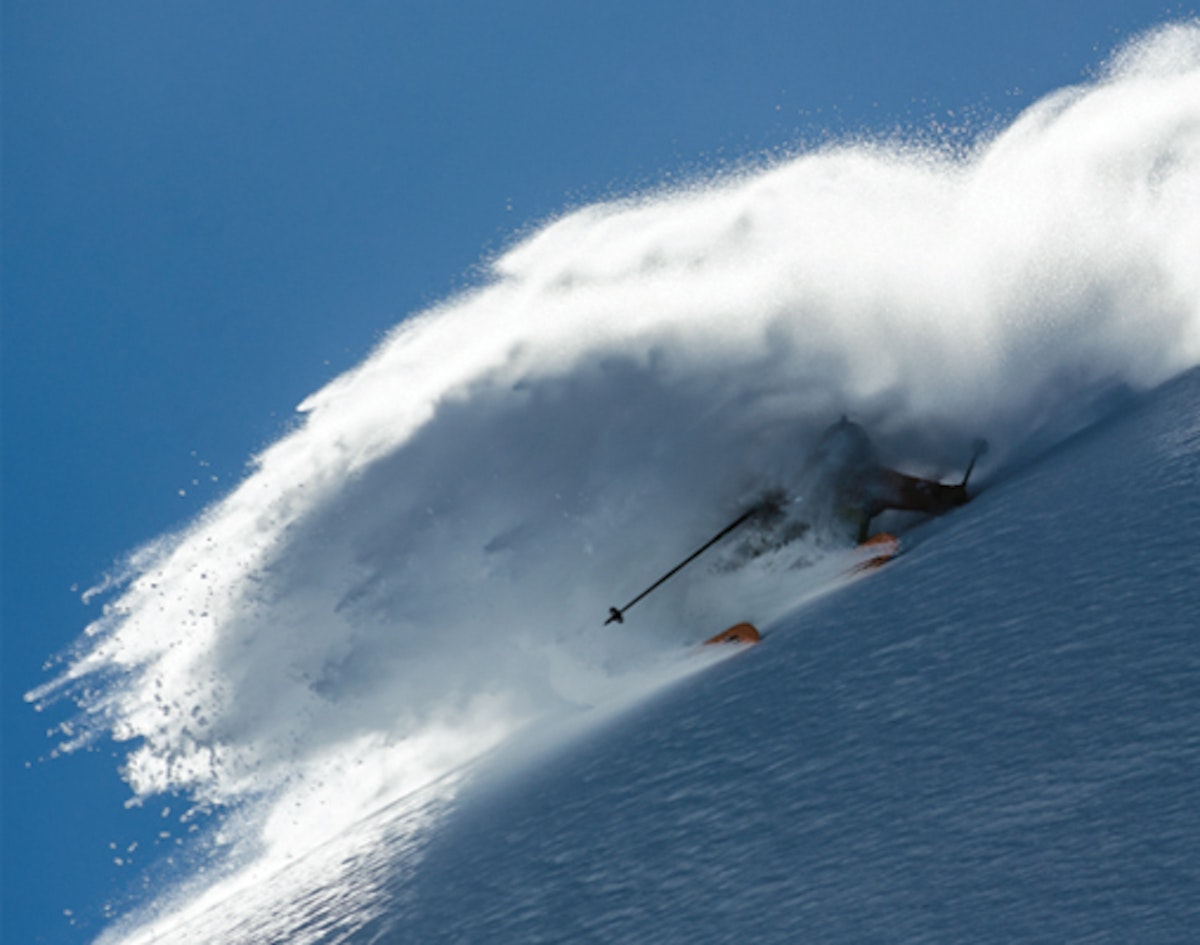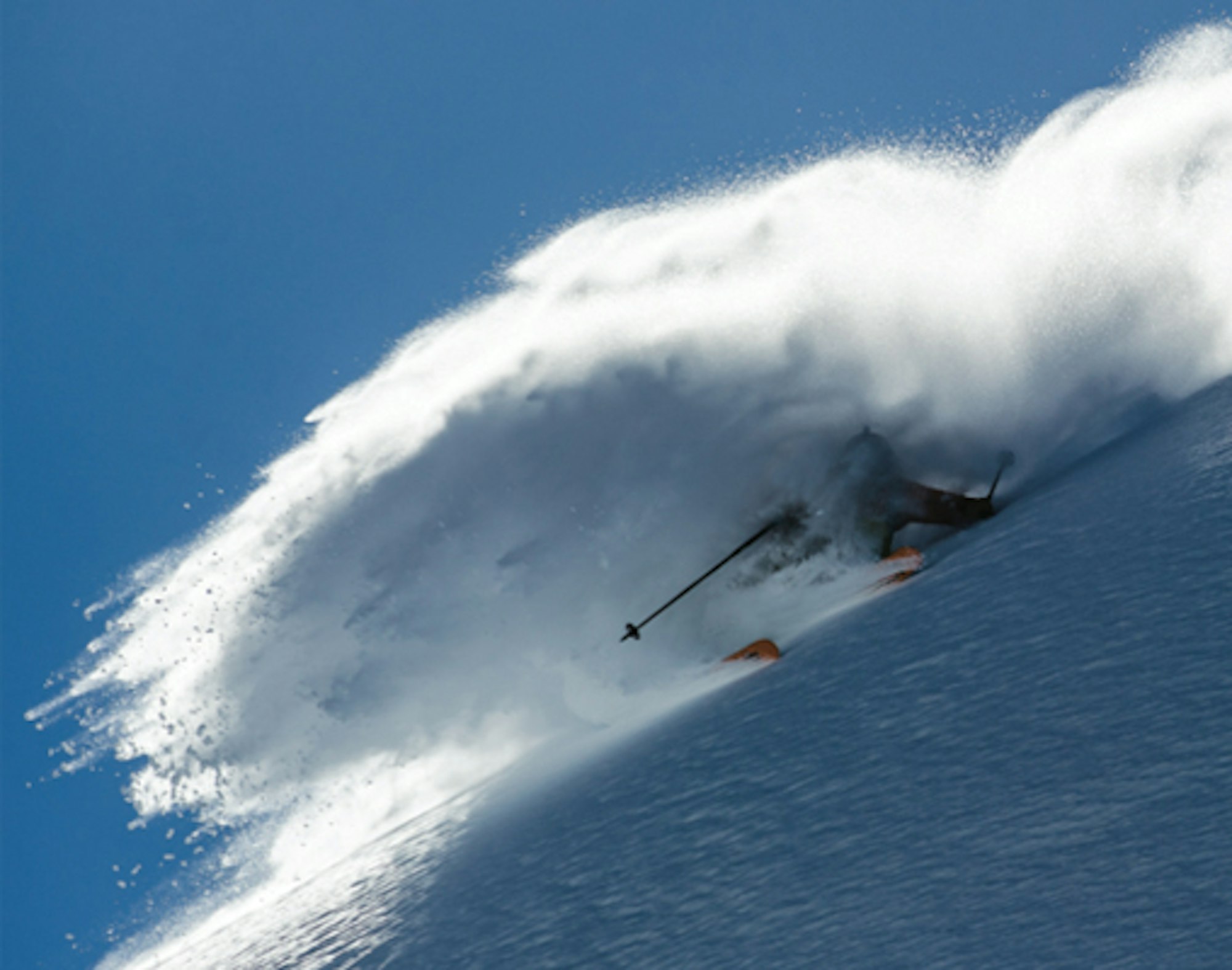As an athlete and boot consultant for Dynafit, skier Eric Hjorleifson has spent the last year testing prototypes, providing feedback and offering solutions. Hoji describes his role with Dynafit as a symbiotic relationship. While Hoji learns about engineering, product development and expedition skiing, Dynafit is learning more about Hoji’s freeride world.
“They realize there are a lot of people like me who want to tour efficiently but need gear they can shred on with big skis, confidently,” says Hoji.
In August, Dynafit announced a long-term contract with Hoji. Now, the Whistler, BC–based skier is on Dynafit’s international team and serves as lead consultant on boots and bindings. “We’ve developed a trust, and they’re willing to let me into the binding side of things,” he says. “It’s a really secretive, competitive, patent-driven game—much more so than boots or skis.”
Hjorleifson has been skiing in MSP segments in Dynafit boots and bindings for the past two seasons, showing North American skiers that you can stomp a landing in a tech binding. This season’s Vulcan boot evolved from Hoji’s famous Frankenboots (a self-made freeride touring boot born from a Dynafit Titan) and is geared toward the aggressive big-mountain ski-touring crowd.


Eric Hjorleifson in the Whistler Backcountry, shot by Blake Jorgenson_MSP.
“Instead of waking up and deciding between two setups, the goal is to be comfortable in one,” says Hoji. “With their technology, they have the capability to pursue that direction in a way the rest of the alpine industry can’t compete with. They aren’t following a trend, they’re leading it.”
“Dynafit is as consistent, core and authentic a brand that I’m aware of,” says president Chris Sword, who leads the North American subsidiary. “We’ve had meteoric growth, but we are laser focused. We haven’t changed the brand or our core promise.” That promise is speed, performance and technology. Dynafit strives to make the highest-performance backcountry equipment in the world and to remain ahead of the curve.
“Our role in the industry is to be disruptive,” says Sword. “We want to introduce products like the Vulcan boot that are game changers. We don’t take ski boots and add a walk mode, we develop a different way to put together a ski boot.”
Originally an Austrian ski boot manufacturer, Dynafit became part of the Salewa/Oberalp Group in 2003. That’s when Benedikt Böhm, a member of the German Ski Mountaineering Team who holds speed records skiing 8,000-meter peaks, jumped aboard as a sales rep. The company was bankrupt, but Böhm believed in the product.
He’s now the international brand manager at the headquarters in Munich, Germany. With subsidiaries in Switzerland, Italy, France, Spain, Poland and Boulder, Colorado, Dynafit employs approximately 200 people around the world.
“Our first boot was a complete failure,” says Böhm. “It burned a million euros, but we didn’t give up.” As the world’s lightest and stiffest boots in their respective categories, Dynafit’s introduction of the ZZero line was a pinnacle moment for the industry. Since establishing the North American subsidiary in 2007, Dynafit sales have grown 1,000 percent. Böhm says of the nine subsidiaries, North America is Dynafit’s most important, strategically. “I’m positively surprised with how quick the American consumer adapted to light-looking gear,” says Böhm. “We knew the market size, and we knew the potential. We had a very clear target, and we reached it.”
Athletes like Böhm have been guiding the development and structure of the brand ever since. Whether it’s the lightest binding made of titanium, a carbon boot or the lightest ski-core technology on the market, he says it’s all about innovation. “We’re never going to stop,” says Böhm. “We can’t rely on our current advantage. We will keep investing in innovation. We’ll get the best patents we can get.”
Dynafit takes a no-compromise approach to materials, which are carefully sourced and selected. But no product management decision is made without direct approval from the athletes. The company outfits expeditions to the most extreme alpine environments, where equipment failure can mean death. Equipment needs to be light but trustworthy. Beyond expeditions, the 12 international team members test Dynafit equipment in the world’s major ski-touring races, such as the Patrouille des Glaciers.
At the very core of the brand are the Dynafit Competence Centers, Dynafit-approved backcountry dealers. Five North American dealers have been designated with this status. “The concept evolved because there were very few enthusiastic, authentic, knowledgeable and specialized alpine-touring dealers we felt could really explain the complexity of ski touring and service consumers,” says Böhm. “We gave those few dealers Competence Center status to show the consumer that they’re in good hands.”
As expected, Hoji says there are some exciting projects in the pipeline. He’s working with a young binding engineer who competed on the Freeride World Tour. He is Dyanfit’s first binding engineer with a freeride background.
“The whole goal is to never be satisfied,” says Hoji. “Since I got the Mercury boot in early summer, I have pages of feedback. But coming straight out of box, it’s the best all- around ski boot the world has ever seen.”



![[GIVEAWAY] Win a Head-to-Toe Ski Setup from IFSA](https://www.datocms-assets.com/163516/1765920344-ifsa.jpg?w=200&h=200&fit=crop)


![[GIVEAWAY] Win a Legendary Ski Trip with Icelantic's Road to the Rocks](https://www.datocms-assets.com/163516/1765233064-r2r26_freeskier_leaderboard1.jpg?auto=format&w=400&h=300&fit=crop&crop=faces,entropy)




![[GIVEAWAY] Win a Head-to-Toe Ski Setup from IFSA](https://www.datocms-assets.com/163516/1765920344-ifsa.jpg?auto=format&w=400&h=300&fit=crop&crop=faces,entropy)


